This tutorial includes everything you need to know about how to freeze zucchini — shredded, sliced, as noodles, and with or without blanching. You’ll also learn how to cook frozen zucchini so it doesn’t get mushy and how to use it for baking.
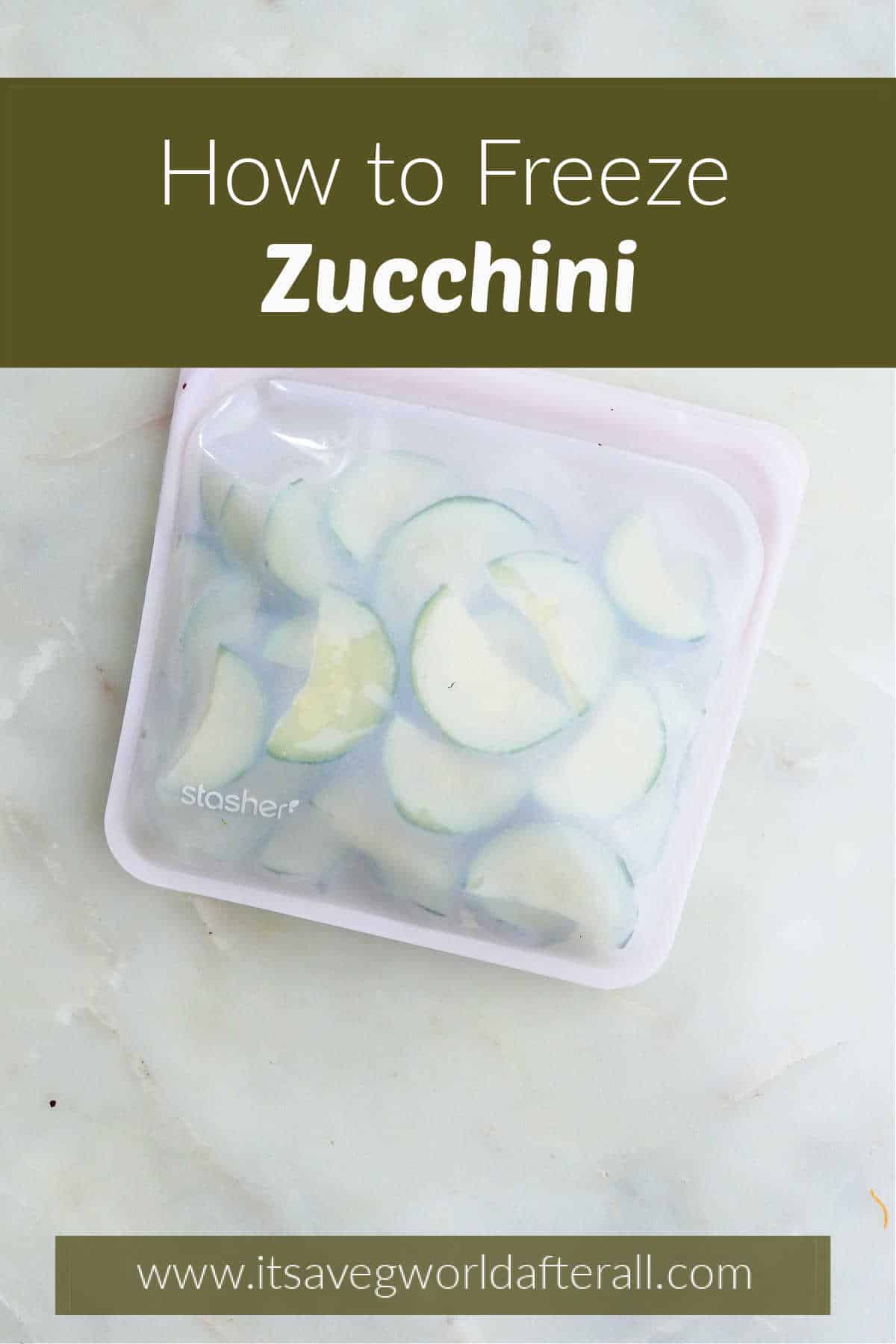
Zucchini season is here! Before you know it, you’ll probably have a plethora of zucchini overflowing in your garden or CSA share box. It’s popping up at farmers markets and grocery stores too, patiently waiting for you to grab some to make your first loaf of zucchini bread.
If you find yourself with too much summer squash, keep reading to learn how to freeze zucchini! It’s an easy way to preserve it to use in baking or cooked dishes at a later time.
Jump to:
How to Freeze Shredded Zucchini for Baking
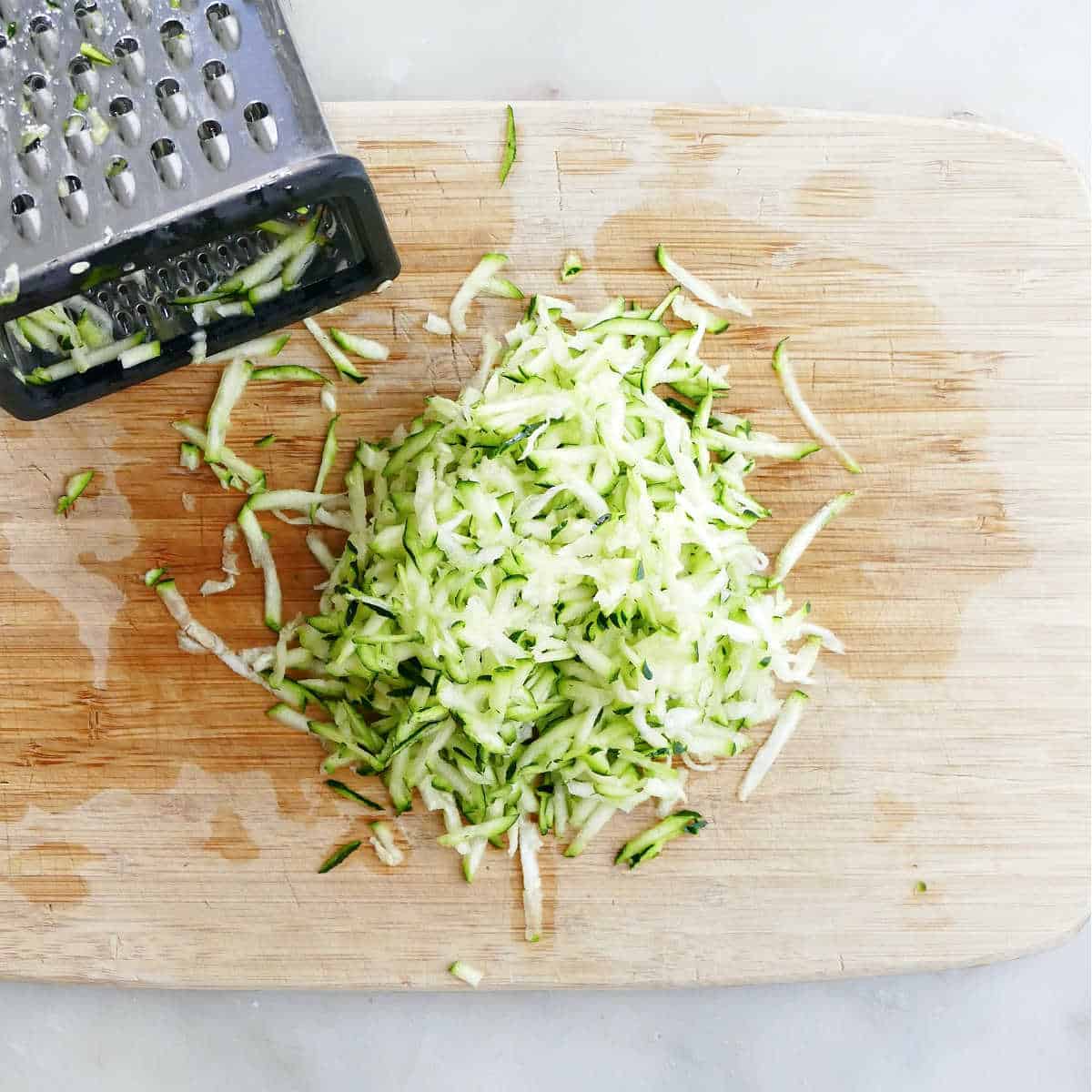
Wash and dry the zucchini, then trim off the stem and end. Shred it using a box or hand grater.
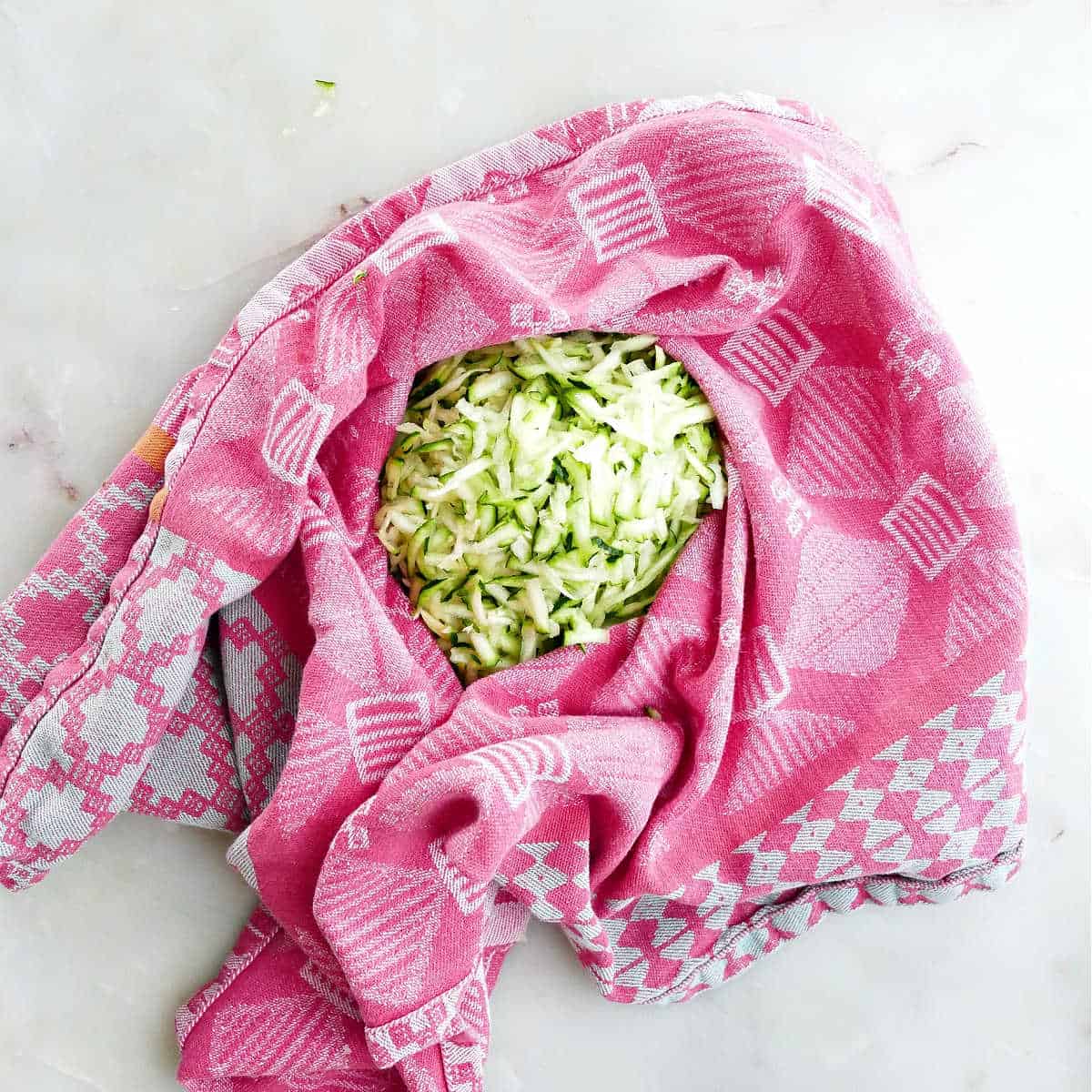
Wrap the shredded zucchini in a clean dish towel or cheese cloth. Wring out the water, repeating several times, until the zucchini is mostly dry.
Next, transfer the shredded zucchini to a freezer-safe container or bag. Seal tightly, label, and keep in the freezer for up to 3 months. Consider storing it in portions of 1 or 2 cups, since those are commonly used in baking recipes.
If you want to use it for baking, let it thaw overnight in the refrigerator. Drain or blot away any excess liquid that develops during the thawing process. Use in breads, muffins, brownies, and more! If the recipe you’re following calls for zucchini that hasn’t been drained, you may want to add the excess liquid from thawing to the recipe instead of discarding it.
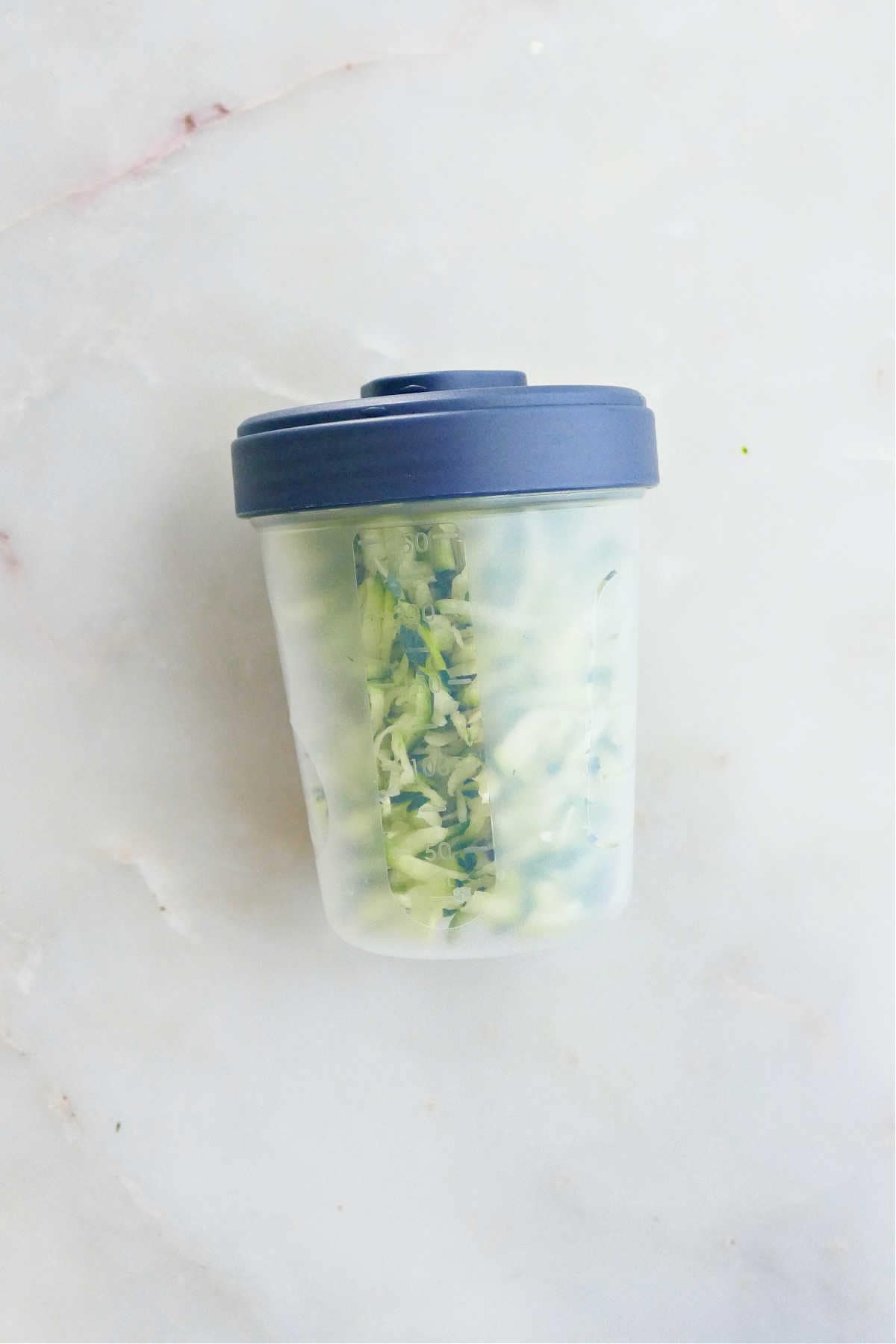
How to Freeze Zucchini Noodles
You can freeze zucchini noodles in a similar way to shredded zucchini. Wash and dry the zucchini, trim, then turn into noodles. Place them in freezer-safe bags. Seal tightly, removing as much air as possible. Label and store in the freezer for up to 3 months.
Frozen zucchini noodles can get mushy when thawed, so I recommend using them only in hot dishes. Add them straight from the freezer to soups, stir fries, casseroles, and other cooked recipes. They may not hold up as well as fresh zucchini noodles, so keep that in mind.
How to Freeze Sliced Zucchini
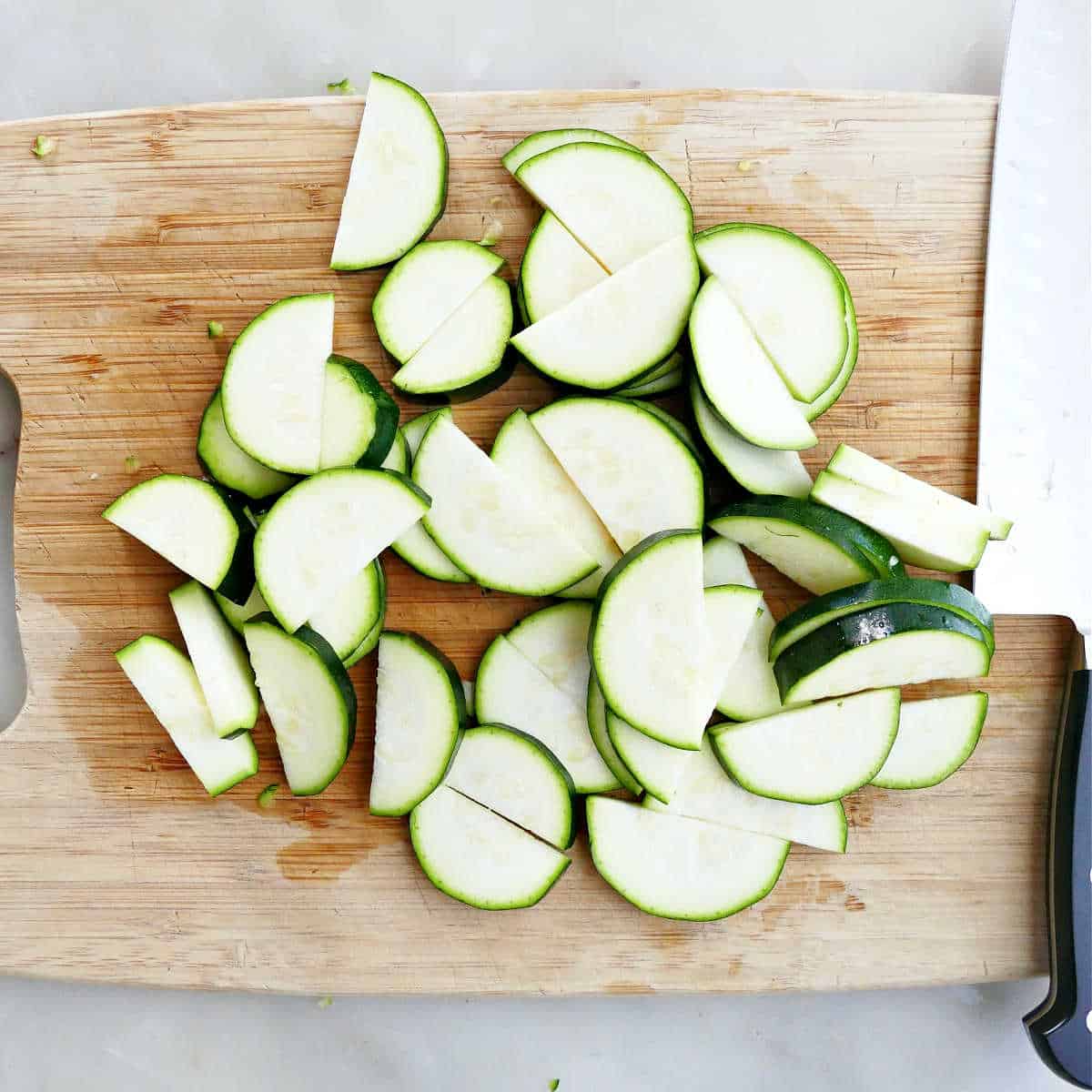
Wash and dry the zucchini, trim, and slice into rounds or half-moons.
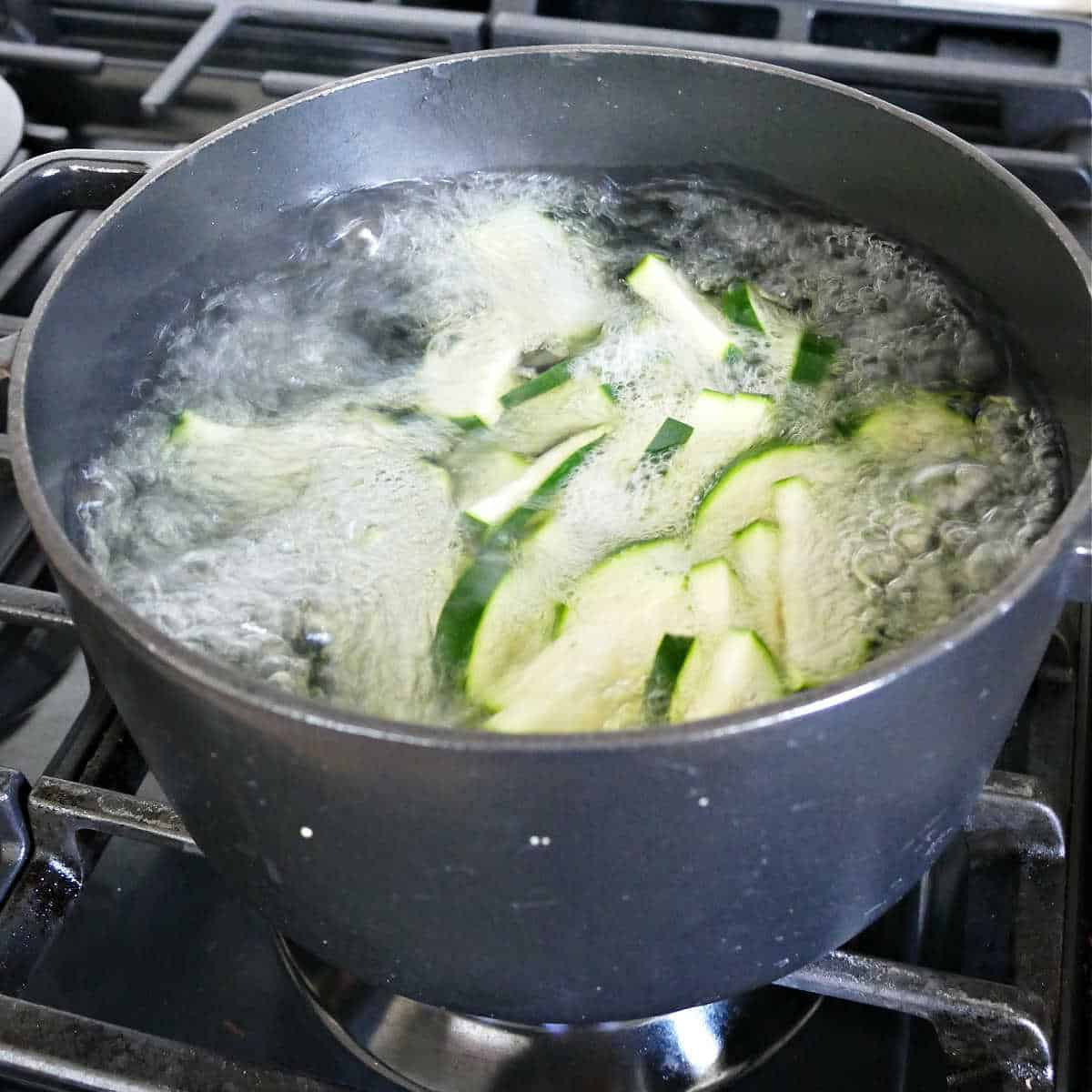
Bring a pot of water to a boil. Drop the zucchini slices or rounds into it and boil for just 1 to 2 minutes.
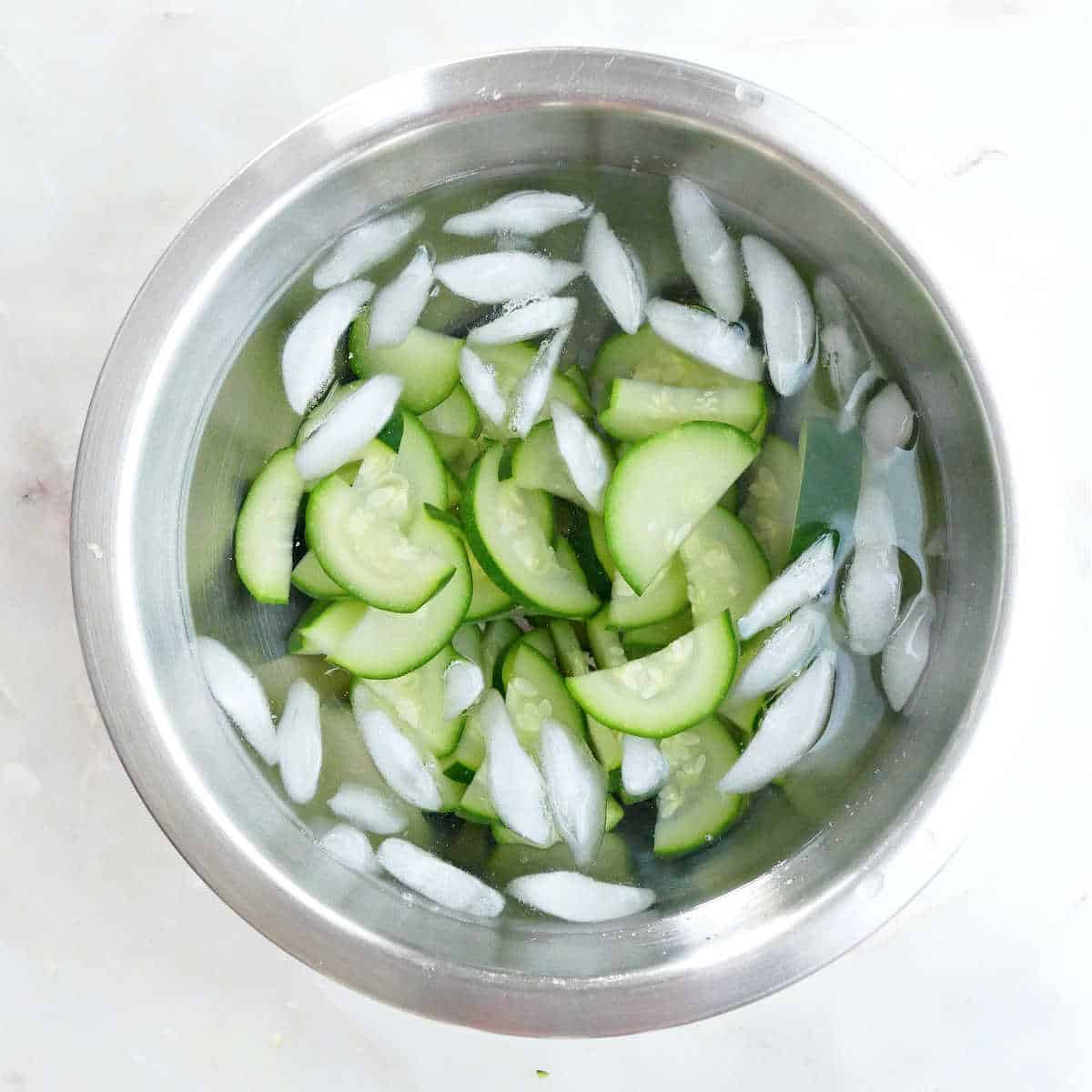
Immediately drain the zucchini or use a slotted spoon to quickly transfer it to a bowl of ice water. Let it sit for a few minutes.
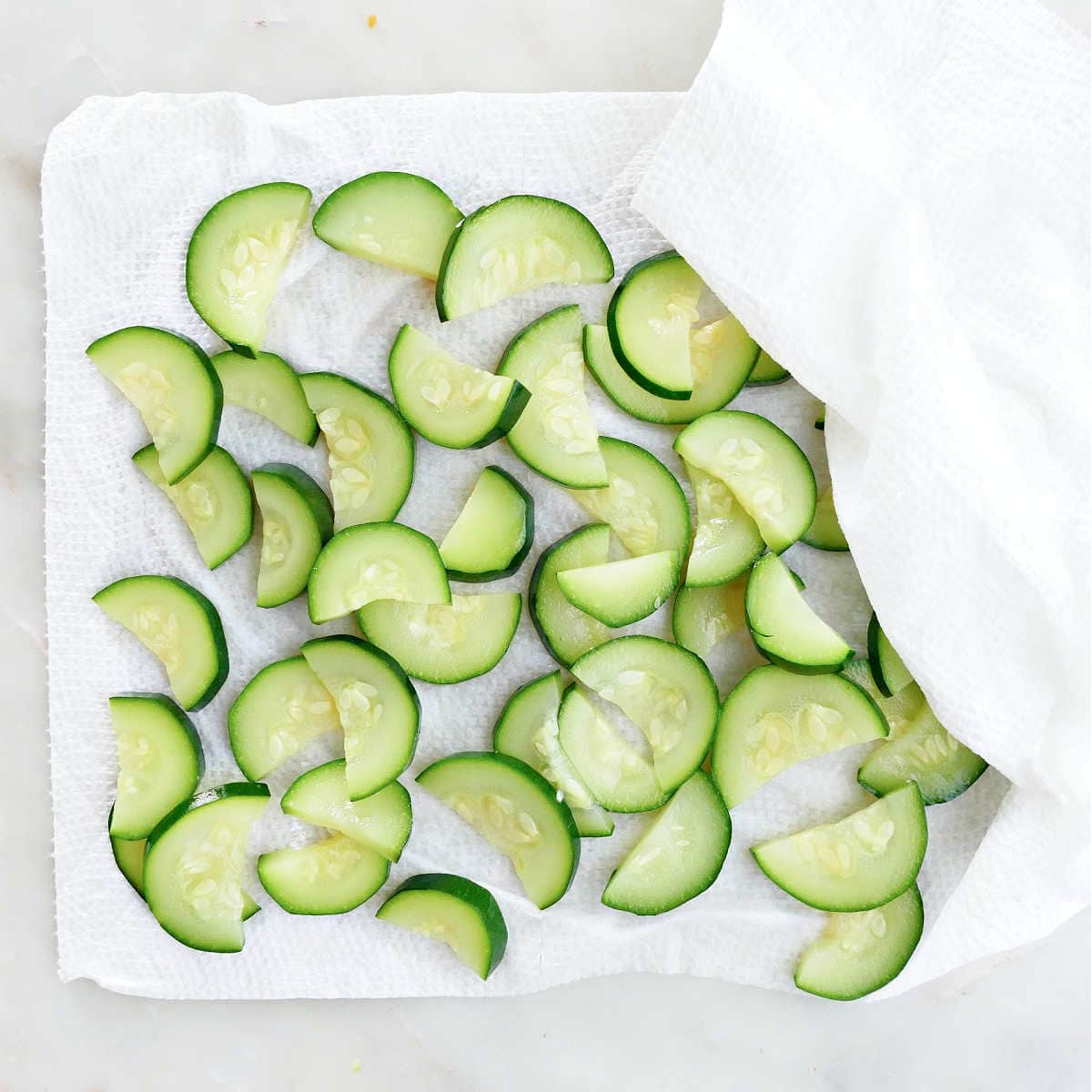
Drain and pat the slices dry with paper towels or a clean dish towel. You want to remove as much water as possible.
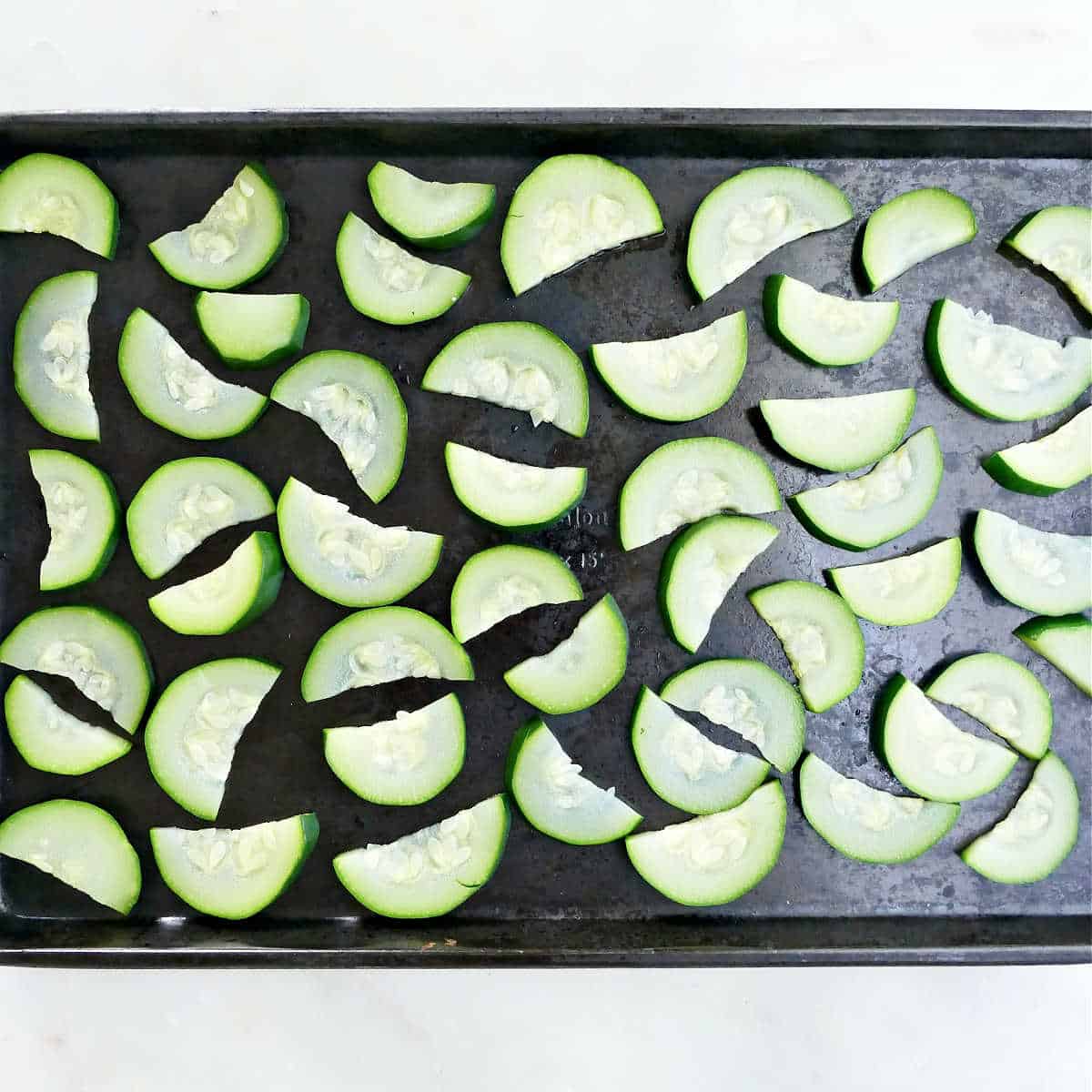
Spread the blanched, drained, and dried zucchini slices on a baking sheet. Place in the freezer, somewhere it won’t get bumped, for 1 to 2 hours until frozen solid.
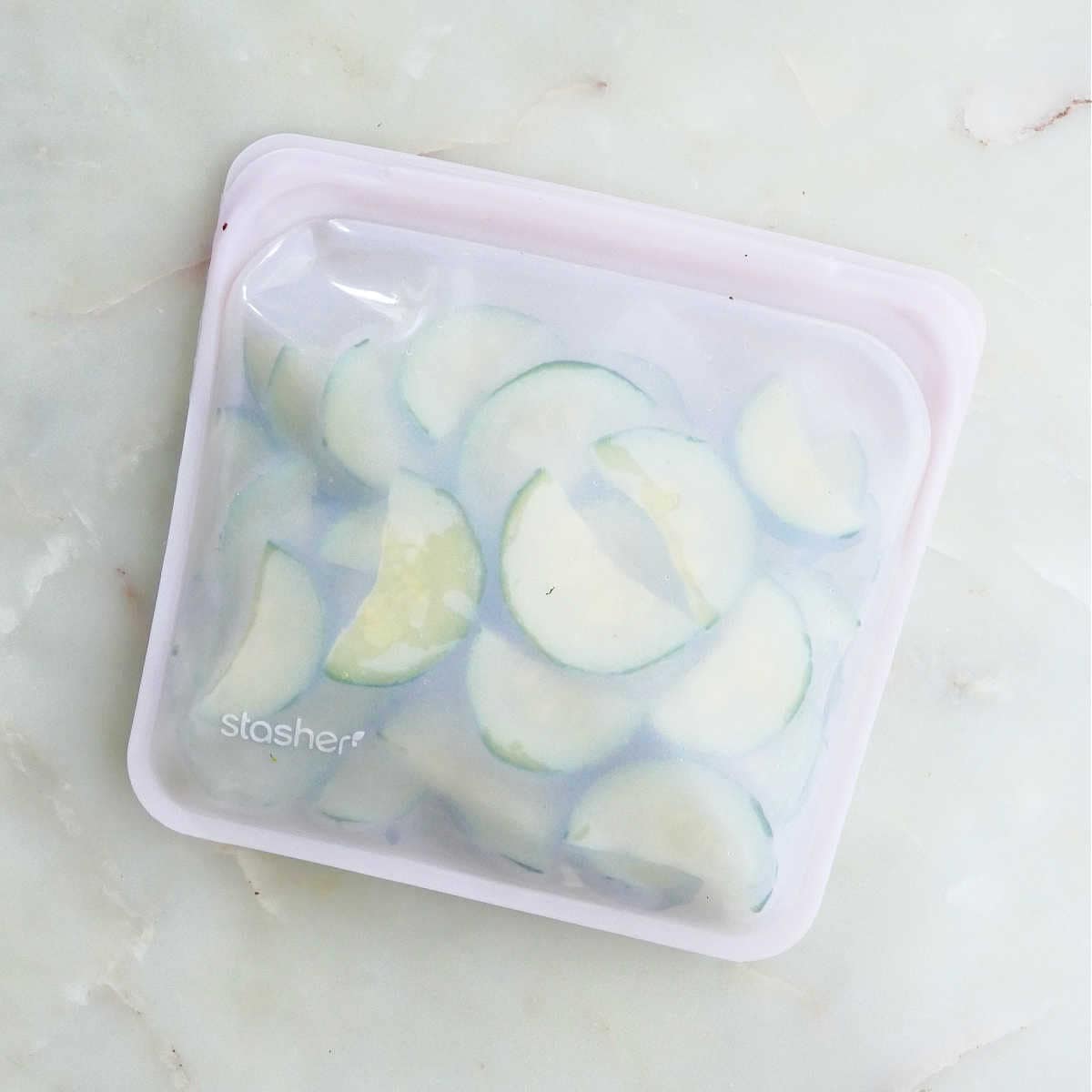
Transfer the frozen zucchini to freezer-safe bags or containers, such as Stasher bags. Seal tightly. Store in the freezer for up to 3 months.
How to Freeze Zucchini Without Blanching
Some preparations of zucchini can be frozen without being blanched, such as zucchini that’s been shredded or turned into noodles, as mentioned above. In these instances, blanching may actually make the zucchini too mushy when thawed or used in recipes.
Sliced zucchini, on the other hand, should be blanched before freezing to preserve quality and nutrition. However, you can technically freeze it without blanching. Just slice it into pieces, place them on a baking sheet to flash freeze for a couple of hours, and then transfer them to bags or containers. Zucchini that hasn’t been blanched probably won’t last as long as blanched slices, so use it within 1 month for best results.
Frozen Zucchini Recipes and Tips
Frozen sliced zucchini can be used in hot dishes, but I don’t recommend it in cold dishes like salads. To prevent it from getting mushy, avoid thawing it before using in cooking. Just add slices straight from frozen to soups, stir fries, and sautéed or roasted dishes. As discussed earlier in the post, frozen zucchini noodles should be used in a similar way.
Keep in mind that zucchini already has a high water content, so it may get softer than fresh zucchini when used in cooking. It’s just the nature of the vegetable.
Use frozen sliced zucchini or noodles in lieu of fresh in these recipes:
- Vegetarian Enchiladas Verdes with Zucchini
- Zucchini Risotto with Shrimp
- Creamy Peanut Zucchini Noodles with Chicken
Use frozen shredded zucchini that has been thawed and drained in lieu of fresh in these recipes:
📖 Recipe
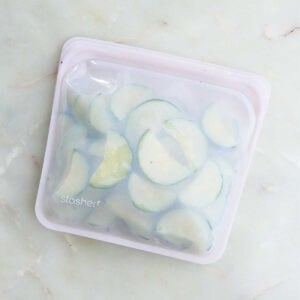
How to Freeze Zucchini
Ingredients
- 1 zucchini
Instructions
- Wash and dry the zucchini. Trim off the stem and end.
Shredded Zucchini
- Shred the zucchini using a box or hand grater.
- Wrap it in a clean dish towel or cheesecloth. Wring out the water, repeating several times until the zucchini is mostly dry.
- Transfer the shredded zucchini to a freezer-safe bag or container. Seal tightly. It can be helpful to freeze it in 1- or 2-cup portions, since those amounts are often used in baked good recipes. Store in the freezer for up to 3 months.
- When you want to use it for baking, let it thaw in the fridge overnight. Drain any excess water before adding to recipes. However, if the recipe calls for zucchini that hasn't been drained, keep the water to use in the recipe.
Zucchini Noodles
- Turn the zucchini into noodles using your preferred method.
- Transfer to airtight freezer-bags. Seal tightly, removing as much air as possible. Freeze for up to 3 months.
- Add noodles straight from frozen to soups, stir fries, or other hot dishes without thawing first. They won't hold up well in cold dishes.
Zucchini slices
- Slice the zucchini into rounds or half-moons.
- Bring a pot of water to a boil. Drop the zucchini in the boiling water and cook for just 1 to 2 minutes.
- Immediately drain the zucchini, or alternatively, use a slotted spoon to quickly remove them from the pot. Transfer to a bowl of ice water. Let them sit for a couple of minutes.
- Drain the slices, then pat them dry. You want to remove as much water as possible.
- Spread the slices out on a baking sheet. Put it in the freezer, somewhere it won't get bumped, for a couple of hours until the zucchini is frozen solid.
- Transfer the frozen pieces to a freezer-safe bag or container. Seal tightly. Store in the freezer for up to 3 months.
- Add frozen slices directly to soups, stir fries, and other cooked dishes without thawing first. They won't hold up well in cold dishes.
Notes
- Keep in mind that zucchini has a high water content, so frozen zucchini does tend to get softer and mushier than fresh zucchini in recipes. If you really need to preserve the texture of zucchini for a recipe, use fresh instead of frozen.

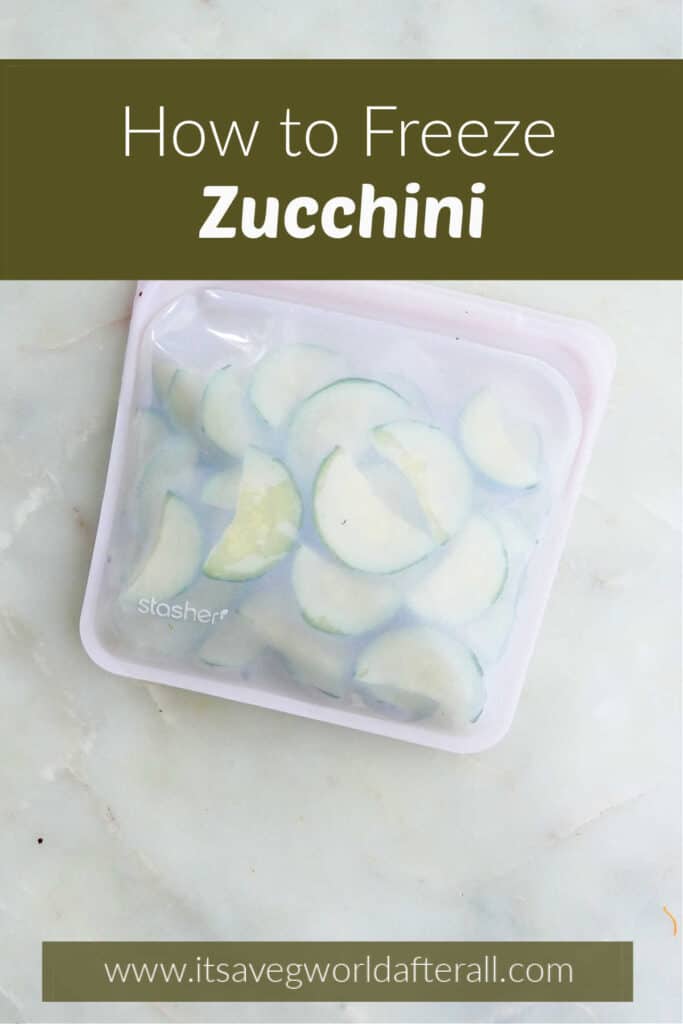

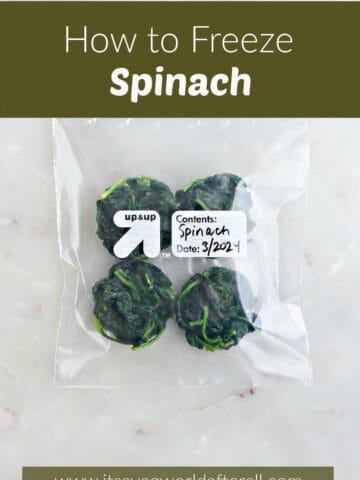
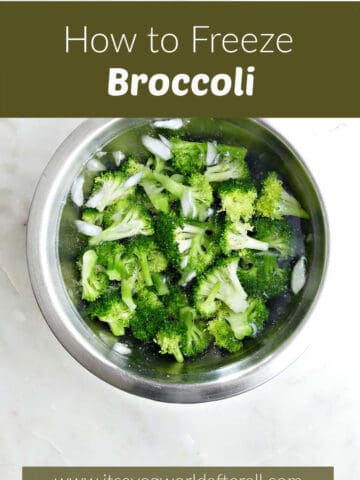
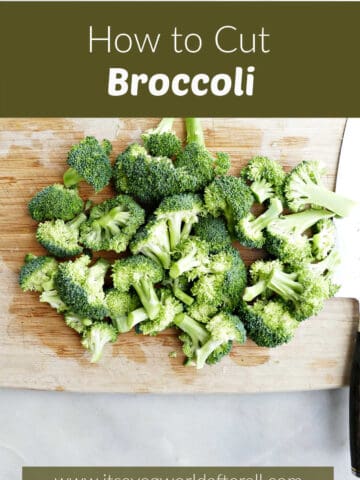
Chris
Thanks!!!
Lizzie Streit, MS, RDN
Glad this post was helpful, Chris!